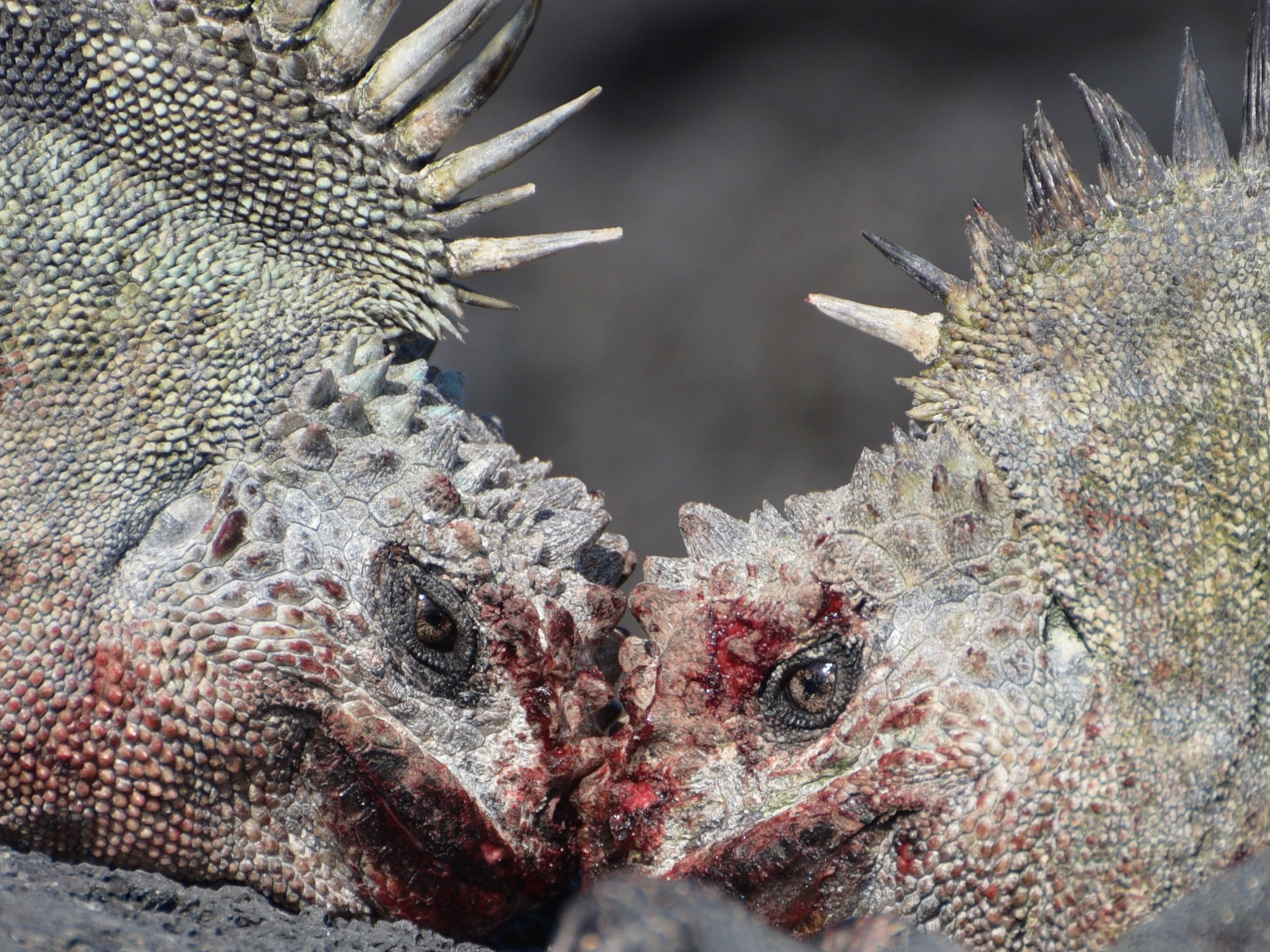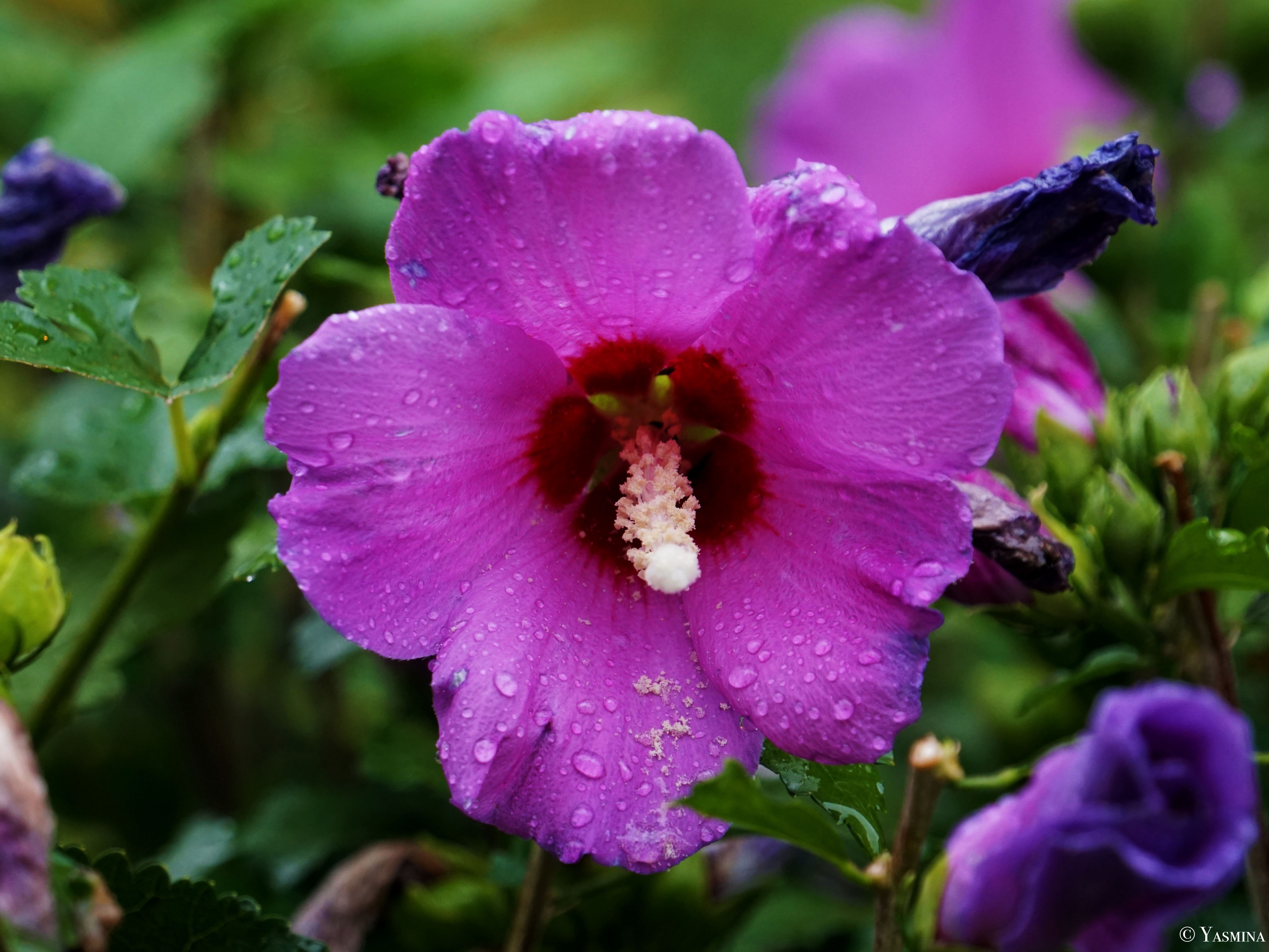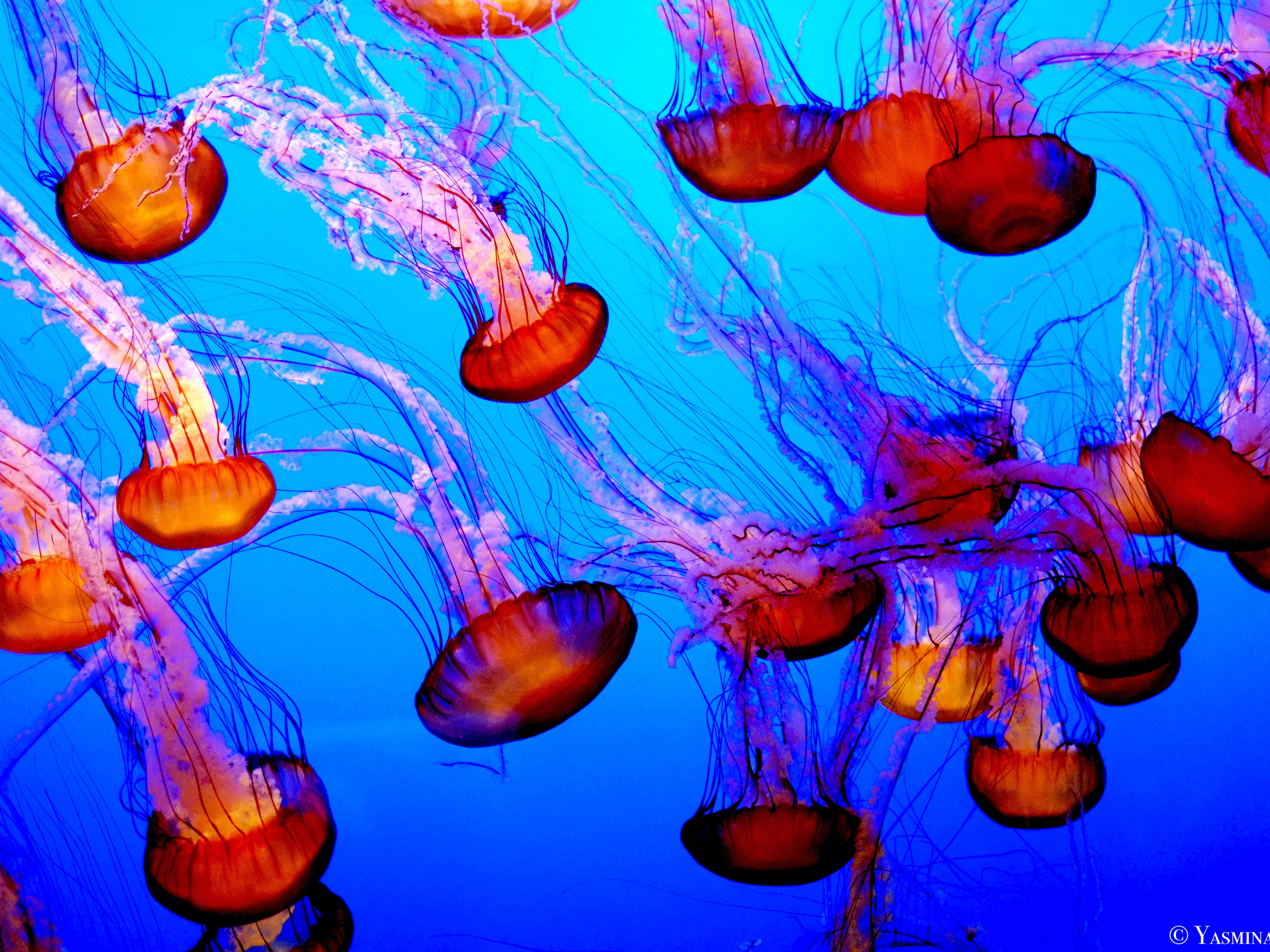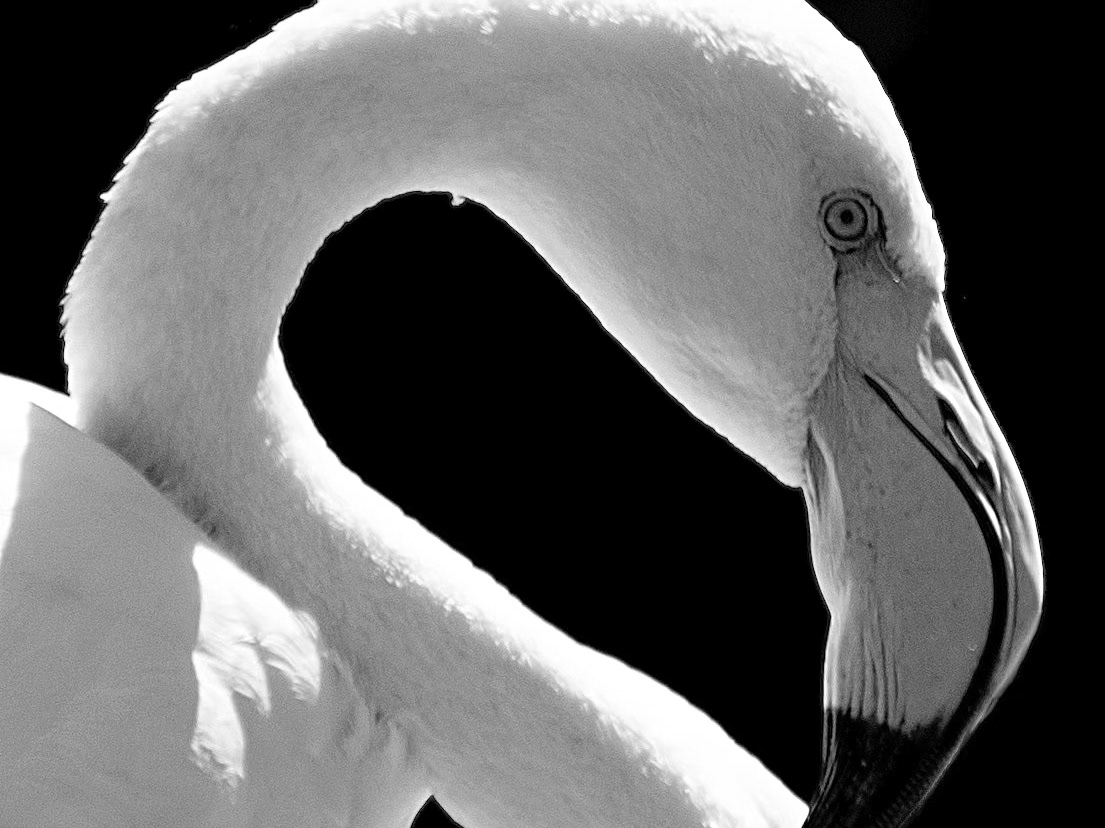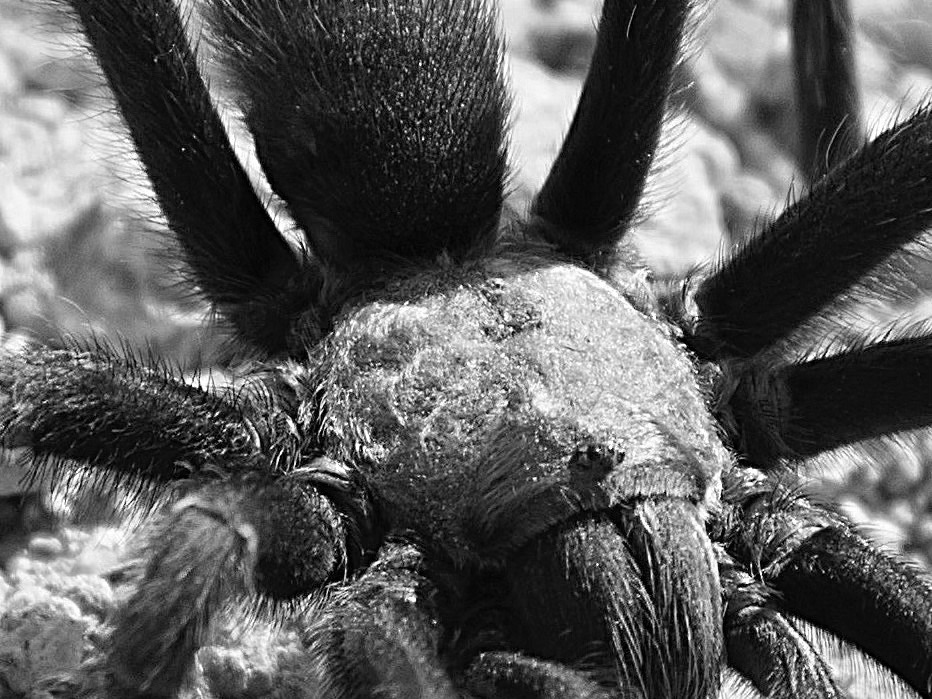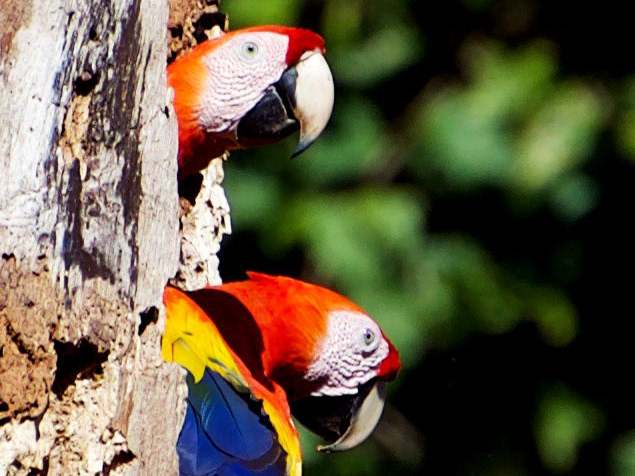Common Name: ‘Ōhi‘a lehua
Scientific Name: Metrosideros polymorpha
Plant Facts
‘Ōhi‘a lehua are endemic to the Hawaiian Islands and are the most common native tree in Hawai’i. Unlike many other Hawaiian plants, they may live in close proximity to toxic volcanic gases by closing the pores of their leaves. Thus, ‘Ōhi‘a trees grow easily on lava and are often one of the first plants to grow on new lava flows. They vary in height, growing tall in favorable conditions and shrub-like in boggy soils or directly on basalt. ‘Ōhi‘a trees are slow growing, yet flourish in a wide distribution of soil conditions, including in dry and wet forests. They are an evergreen tree with nectar-producing flowers, making it one of the most vital food sources for native Hawaiian birds. As other plants, such as lobelias and mints, become rarer, more birds are starting to rely on ‘Ōhi‘a lehua for nourishment. As the American Bird Conservancy states “‘Ōhi‘a is so critical to the survival of Hawai'i's native birds that it is hard to imagine a vibrant avifauna without it.”
Interaction with Humans
Bark from the ‘Ōhi‘a trees are used to create fences, seats, gunwales, and deckings of canoes. Hawaiians use the lehua (or flowers) and leaf buds in leis (Hawaiian necklaces) and also use them medicinally to treat pain during childbirth. Many native Hawaiians refer to the ‘Ōhi‘a lehua tree and its forests as sacred to Pele, the volcano goddess. Legend reveals that the goddess Pele fell in love with the young warrior ‘Ōhi‘a who rejected her since he was already in love with a woman named Lehua. Outraged and jealous, Pele transformed ‘Ōhi‘a into a tree. The other gods pitied the heartbroken Lehua and reunited her with her lover by transforming her into a flower. Other accounts of the story claim that Pele felt repentant and was unable to reverse the transformation; thus, she turned Lehua into a flower. Hawaiians believe that when a lehua flower is plucked from an ‘Ōhi‘a tree, the sky will fill with rain, symbolizing the estranged lovers’ tears. Unfortunately, this sacred species has greatly diminished as a result of human-introduced Ceratocystis fimbriata, a fungus and plant pathogen. This strain of disease, known as Rapid ‘Ōhi‘a Death, has attacked many forests in Hawai’i, killing hundreds of thousands of ‘Ōhi‘a trees. They are also threatened by invasive plant species, such as strawberry guava, faya trees, and meadow ricegrass. In areas where the ‘Ōhi‘a lehua forests are disappearing, many specialized birds and insects are becoming endangered and extinct. As a result, more conservation efforts must focus on protecting this iconic species.
Sources
• Gemmill, C. (1998). Pritchardia affinis. The IUCN Red List of Threatened Species, 1998. https://dx.doi.org/10.2305/IUCN.UK.1998.RLTS.T38641A10141295.en
• Goldfarb, A. (2016). Rapid 'Ohi'a Death Threatens Habitat For Hawai'i's Forest Birds. American Bird Conservancy. Retrieved from https://abcbirds.org/rapid-ohia-death-threatens-habitat-for-hawaiis-forest-birds/
• Staake, J. (April 24, 2020). Ohia Lehu, a Legendary Plant of Hawaii. Birds & Blooms. Retrieved from https://www.birdsandblooms.com/gardening/flower-gardening/ohia-lehua-legendary-plant-hawaii/
• Wallace, G. (June 30, 2016). Hawai'i's Legendary Ohi'a Tree is Important For Birds and People. American Bird Conservancy. Retrieved from https://abcbirds.org/hawaiis-ohia-tree-holds-legendary-importance-for-birds-and-people/

